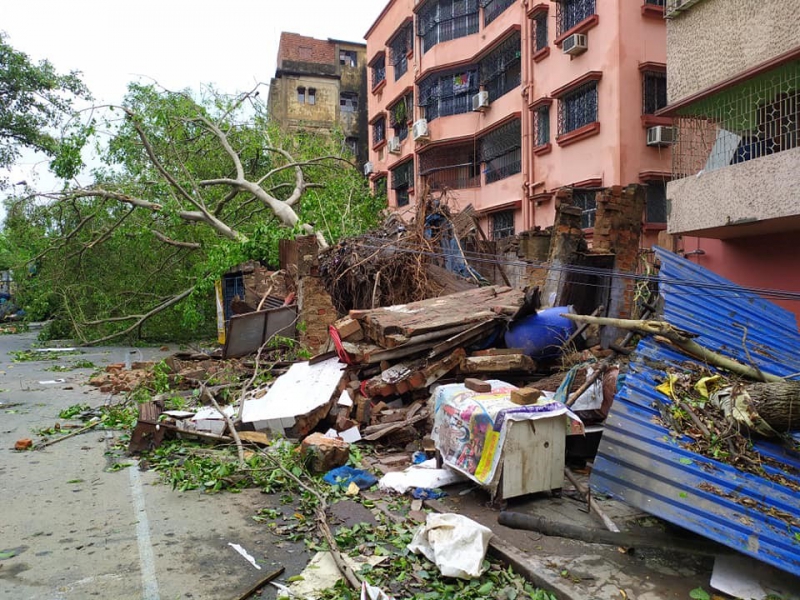As climate change reshapes our world, its consequences extend beyond rising sea levels and extreme weather events. One of its most alarming effects is the surge in climate-induced migration, exposing vulnerable populations to trafficking risks. This is not just an environmental crisis—it is a human rights emergency demanding urgent action and leadership.
The Climate-Trafficking Nexus
According to the latest Global Estimates of Modern Slavery, nearly 50 million people were living in modern slavery in 2021. Of these, 28 million were subjected to forced labor, while 22 million were trapped in forced marriage. Children account for roughly a quarter of all victims, with 6.3 million exploited in commercial sexual activities.
India, one of the most climate-vulnerable countries, faces a dual crisis. Nearly 70% of its population resides in rural areas, with agriculture as their primary livelihood. However, recurrent droughts, floods, and cyclones are devastating these communities, leading to income loss and food insecurity. As families migrate in search of stability, they often encounter unsafe conditions where traffickers prey on their desperation.
Climate Change and Displacement
Climate-induced displacement is closely tied to shifts in land use and ownership. Historically, migration has surged in response to climate stressors like droughts and floods. Climate change accelerates these patterns, leading to chaotic urbanization and increased vulnerability.
The Sundarbans, a critical ecological region in India, exemplifies these challenges. Frequent cyclones and saline water intrusion have destroyed livelihoods, triggering mass migration. Reports indicate that 80% of villages in the Sundarbans have a marginal male population, as men leave for urban centers like Tamil Nadu, Andhra Pradesh, and Delhi. With children often left behind with elderly relatives, the risk of trafficking escalates.
Activists in the region report a post-pandemic surge in trafficking cases, exacerbated by poverty and climate-induced displacement. “We receive two to four missing complaints every month from the Sundarbans,” says Subhashree Raptan of Goranbose Gram Bikas Kendra, a partner of the Tafteesh programme. Official records show that 18 human trafficking cases were reported in South 24 Parganas in 2023.
“Climate change is increasingly a factor in human trafficking, particularly in vulnerable areas like the Sundarbans. Back-to-back cyclones like Amphan and Yaas have wiped out livelihoods, leading to greater migration and exposing women, girls, and marginalized groups to heightened risks,” says Nihar Ranjan Raptan, founder-secretary of Goranbose Gram Bikash Kendra, an NGO combating trafficking.
The Role of Survivor Leaders
Amid these adversities, survivor leaders offer hope. The philosophy behind survivor leadership is that those who have endured trafficking possess unique insights into vulnerabilities, making them powerful agents of change.
Take Pooja, a survivor from the Sundarbans. Trafficked at age 11, she faced stigma even after her rescue. Determined to rebuild her life, she started working at a bag boutique and now dreams of launching her own business to generate local employment. Her story is a testament to the transformative power of survivor leadership.
Survivor leaders play a pivotal role in combating trafficking and addressing climate vulnerabilities. They educate at-risk communities about trafficking tactics, climate-induced risks, and safety measures. By strengthening community networks, they build peer support systems that act as informal safety nets in vulnerable areas.
Their advocacy extends to pressing for policies that promote climate-resilient infrastructure, social protection for migrants, and stronger anti-trafficking laws. Moreover, they champion livelihood opportunities by supporting sustainable economic initiatives, such as skill-building programs in agriculture and crafts, which reduce the need for migration and mitigate trafficking risks.
Engaging Duty Bearers Through Survivor Leadership
A key aspect of addressing the intersection of climate change and trafficking is engaging duty bearers—government officials, policymakers, and law enforcement agencies. Survivor leaders, supported by mentoring organizations, collaborate with these stakeholders to bridge gaps in awareness and action. Their lived experiences make them uniquely positioned to guide interventions that are practical, community-centered, and sustainable.
By facilitating training sessions, workshops, and advocacy campaigns, survivor leaders help duty bearers grasp the nuanced links between climate vulnerabilities and trafficking. This engagement fosters more responsive governance, ensuring resources are allocated effectively to protect at-risk communities.
